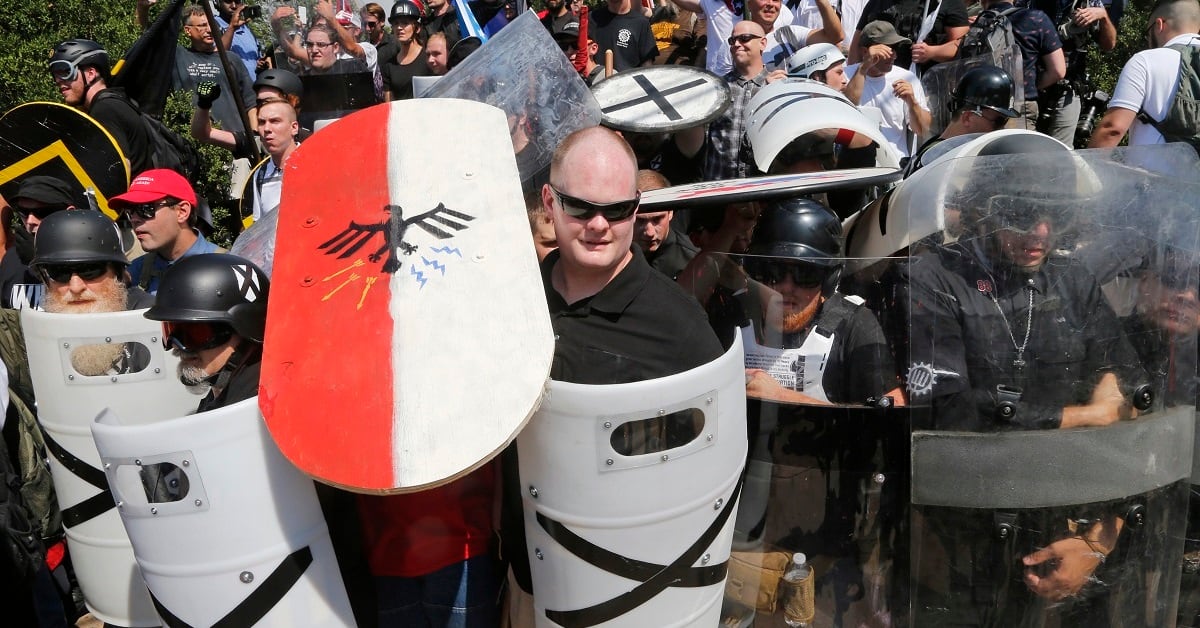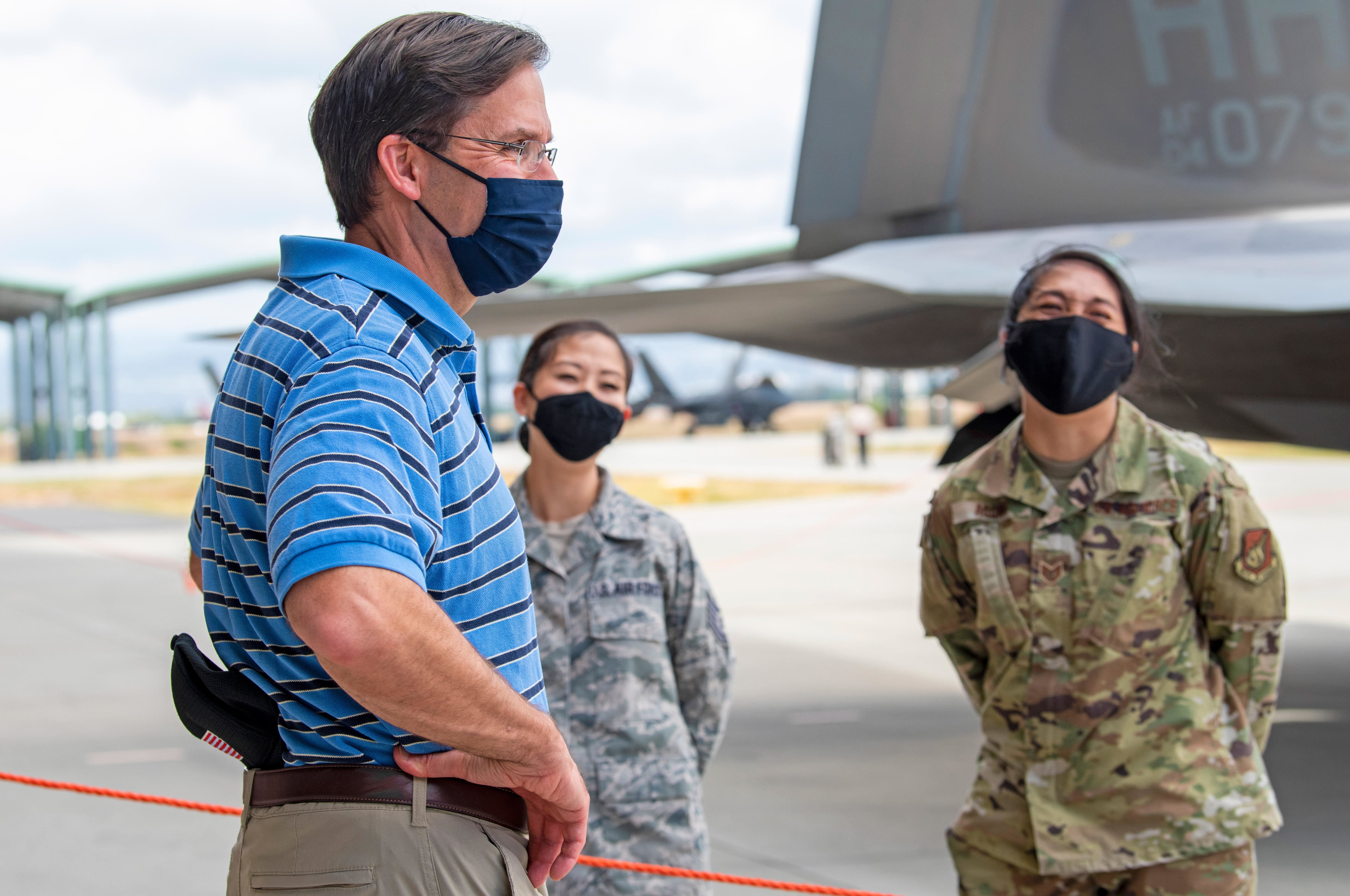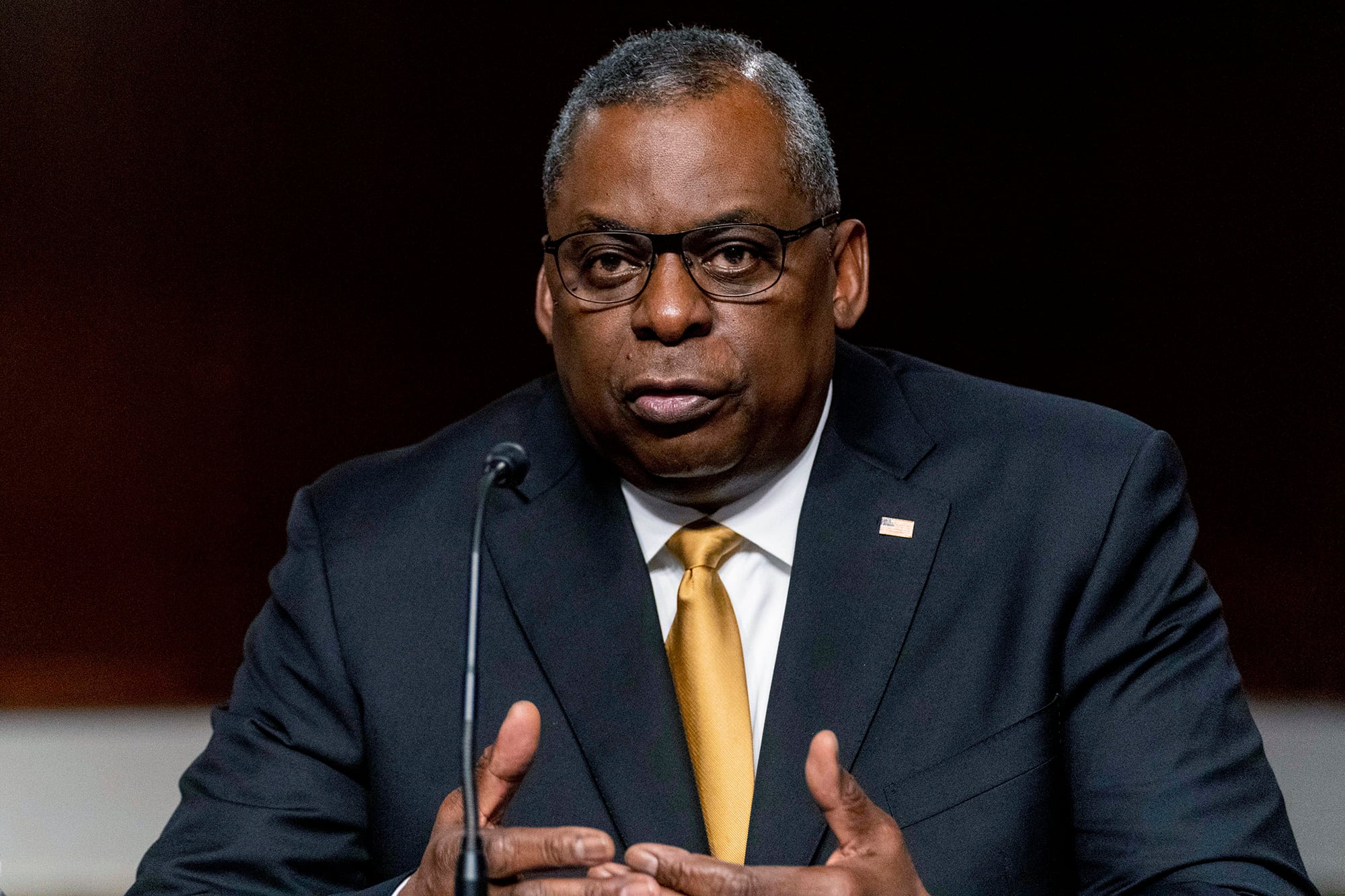Arkansas Republican Sen. Tom Cotton continued his campaign against what he sees as a scourge of racist training in the military Thursday. In a webinar hosted by the Heritage Institute, he again alleged he has received hundreds of complaints of “critical race theory” teachings in military units.
Cotton and his allies have publicly confronted Pentagon leaders in recent weeks, concerned that the Defense Department’s push for diversity and inclusion training and education is a thinly veiled vehicle for indoctrinating troops into the idea that white men are oppressors, people of color are victims and that America is an intractably racist country.
“But what happens if it harms unit cohesion and morale and esprit de corps in our military?” Cotton asked. “Then we literally are risking our freedom. And that’s why it’s so important that the military’s highest priority should remain what it always has been: to fight and win real wars, not to get distracted by culture wars.”
In many ways, the military has been dragged into this particular culture war. What started as an effort to increase morale and unit cohesion has been derided by both conservative lawmakers and commentators as divisive and partisan.
The issue has come up in multiple budget hearings in the Senate and House Armed Services Committees in recent weeks, taking up time that lawmakers usually spend questioning leaders about procurement and personnel programs.
On Tuesday, during a press conference with reporters, House Armed Services Committee Chairman Adam Smith, D-Wash., said he hopes to avoid any amendments or lengthy arguments on the issue of critical race theory in drafting the defense authorization bill, which is already running behind schedule because the Biden administration didn’t release its budget proposal until May.
“I don’t see anything that needs to be put in our bill one way or the other,” he said. “That’s an administration ― that’s the DoD, and people can fight that out over there. We’re going to try to avoid legislating on that issue.”
What Cotton has diagnosed as “critical race theory” sounds much more like ham-fisted attempts at diversity and inclusion training.
“It’s often hard to ignore when you’re being forced to watch a video that declares, there’s systemic racism and white privilege throughout our military, which is one of the complaints we received, or that white soldiers were singled out during equal-opportunity training, that they didn’t have much to say,” Cotton said, citing a whistleblower site he launched with Rep. Dan Crenshaw, R-Texas, in early June.
For a largely nascent effort, it’s not surprising that commanders would be experiencing some trial and error with how they convey the notion that the color of a person’s skin might affect their experiences in the world.
After all, the discussion of ideas like systemic racism and white privilege are new for a lot of Americans, who for decades have been told that simply not acknowledging race or ethnicity was the best way to demonstrate one’s own lack of bigotry.
“We cannot have an Army, Navy, Marine Corps, Air Force or Space Force, where young troopers are looking to their left and right, and seeing not fellow citizen took an oath to the Constitution ― someone who’s willing to lay down their life, not just for their country, but to keep you alive,” Cotton said, describing what was considered non-racist in the past. “We can’t have [troops] looking at their noncommissioned officers and their officers, wondering if they’re getting a tough duty because of the color of their skin. We need them to see each other simply as fellow Americans, and fellow warriors who are there to perform the mission.”
The irony is that military leaders would agree with Cotton ― that would be ideal, but feedback from the force has shown that’s not the experience troops are having. It’s seen not only in disparate outcomes in the military justice system, but also in Pentagon leadership, which is far more white and male than the rest of the force.
“You know, back then it was like, say, the fact that we all believed that this country is committed to colorblindness, and we respect everyone irrespective of the color of their skin or their ethnicity, or for that matter, their political beliefs or their religious views or anything else,” Cotton said. “And it was a regular reminder, that was the expectations we have for all of our soldiers and if they didn’t meet those expectations, there’d be severe consequences.”
The disagreement is over whether talking openly about diversity race or ethnicity, and the experiences that go along with it, is a boon to cohesion, or a death blow.
When everything changed
According to multiple surveys of active-duty troops by Military Times, white nationalist and supremacist rhetoric is not uncommon in the military workplace.
RELATED

To change that, diversity and inclusion training has become a feature of many organizations, public and private alike. That includes DoD, after the murder of George Floyd in Minneapolis set off nationwide protests.
The ripple effects in the Pentagon were less explosive, but still represented a tectonic shift.
Then-Chief Master Sergeant of the Air Force Kaleth Wright, who is Black, posted a Twitter thread in which he expressed identifying with a long list of Black men and boys who had been killed by police officers in recent years.
He vowed a review of the Air Force justice system, which ― along with the other services ― studies have shown disproportionately punishes people of color.
Leaders from the other services fell in behind Wright, expressing their dismay not only at Floyd’s death, but at the stories they’d heard from their own troops about the disparate treatment they’d received both in the military and out of it.
Diversity and inclusion projects launched in the Army, Navy and Air Force, while Defense Secretary Mark Esper stood up a team to make suggestions for immediate policy changes that could erase the racial bias so many service members said they had experienced, with an eye toward a more long-term board that would oversee diversity and inclusion efforts.
Promotion packets were the target of one of Esper’s first changes. Feedback from the force suggested removing headshots from the paperwork, removing any possibility that appearance could play a role in a board’s decision to green-light a service member for the first step in the promotion process.
Esper also got suggestions to remove name and sex from the paperwork, to narrow consideration down to nothing but accomplishments, though those changes haven’t been implemented.
RELATED

That same month, the current controversy over what has been erroneously called “critical race theory” was born.
It had been mostly known in legal and academic circles, as a framework for analyzing the American legal system and its historically unequal treatment of people of color.
In July 2020, according to a profile by the New Yorker, a conservative Washington state journalist used the term to describe some city of Seattle diversity training documents a source had sent him.
A series of stories caught the attention of Fox News pundit Tucker Carlson, who brought Christopher Rufo on his show on Sept. 2. The following morning, Mark Meadows, then the White House chief of staff, called Rufo. He told him President Donald Trump had tasked Meadows with eradicating this “critical race theory.”
In the months since, critical race theory has become something of a catch-all bogeyman, used to describe any sort of discussion about the disparities people of color report experiencing, framed as a dogmatic demonization of white people.
Critical race theory itself is defined as “an interdisciplinary approach that seeks to understand and combat race inequity in society. The approach views race as a socially constructed identity that plays a hugely important role, which goes largely unrecognized by members of the majority population. CRT defines racism more broadly than is usual in the mainstream. Rather than seeing racism as an individual manifestation of hatred, CRT explores the social structuring of racism as a complex, changing and often subtle aspect of society that operates to the benefit of White people, especially White elites.”
There are different schools of thought within the framework itself, though its 1970s roots can be traced back to some radical feminist and Marxist thought leaders.
Rufo, by his own admission, thought the term perfectly tapped into the fears conservatives had been expressing for years, about “political correctness” and “cancel culture,” despite only being loosely related.
“ ‘Its connotations are all negative to most middle-class Americans, including racial minorities, who see the world as ‘creative’ rather than ‘critical,’ ‘individual’ rather than ‘racial,’ ‘practical’ rather than ‘theoretical.’ Strung together, the phrase ‘critical race theory’ connotes hostile, academic, divisive, race-obsessed, poisonous, elitist, anti-American,” the New Yorker piece reads. “Most perfect of all, Rufo continued, critical race theory is not ‘an externally applied pejorative.’ Instead, ‘it’s the label the critical race theorists chose themselves.’ "
Since then, conservative pundits and politicians have warned that critical race theory is not only rampant in higher education, but seeping its way into elementary schools and, alarmingly, military training.
The rhetoric has steadily picked up steam since January, when DoD, in response to revelations that dozens of those arrested for rioting at the Capitol on Jan. 6 were either current or former service members, began a line of effort against extremism in the services.
While the Pentagon’s definition, still in the works, has leaned more toward white nationalist ideology and advocating for violence against certain groups or the government, some conservatives have seen that push as yet another thinly veiled attack on conservative, Christian beliefs.
RELATED

CRT in the ranks?
The only clear example of critical race theory being taught in the military is at the U.S. Military Academy.
In April, Rep. Mike Waltz, R-Fla., sent a letter to West Point’s superintendent, inquiring about extracurricular workshops cadets had attended in the name of diversity, equity and inclusion education.
During a June 23 hearing, Waltz confronted Austin about a presentation titled “Understanding Whiteness and White Rage,” as well as lesson plans within some West Point classes that cover critical race theory.
Waltz conflated these academic settings with “military training,” which is of course one of the key features of West Point, in addition to the earning of bachelor degrees.
The comparison set off Army Gen. Mark Milley, chairman of the Joint Chiefs of Staff, who launched into a monologue deriding the idea that critical race theory is so dangerous that not even college students should discuss it.
“The United States Military Academy is a university. And it is important that we train, and we understand ― and I want to understand white rage. And I’m white, and I want to understand it,” he said.
RELATED

Cotton on Thursday conceded that an academic setting was more appropriate for discussing controversial theories, though he did express concern that professional military education might too closely resemble civilian higher education.
“I think that’s especially, in professional military schools, a reflection that they become too much like graduate schools, for people who are going to get masters or PhDs, as opposed to going to hone their craft of war-fighting,” Cotton said. “Every minute they dedicate to some critical race theory primer could have been an hour better dedicated to books on seafaring or [Ulysses S.] Grant’s memoirs or studying Chinese military doctrine ― things that we actually expect and need our officers to know.”
Perhaps, he suggested, all general and flag officers should go before the Senate for confirmation hearings, the way it’s done for those who’ve been nominated for the chief of staff of a service or head of a combatant command.
“I may start, you know, probing nominees to be promoted to the ranks of O-7 to O-10 on their views on it, and what’s happened in their command,” he suggested.
“Maybe it’s time that we start ensuring that our flag officers subscribe to those very basic principles that are outlined” in the Declaration of Independence or Martin Luther King, Jr.’s “I Have a Dream” speech, he said.
Meghann Myers is the Pentagon bureau chief at Military Times. She covers operations, policy, personnel, leadership and other issues affecting service members.
Leo covers Congress, Veterans Affairs and the White House for Military Times. He has covered Washington, D.C. since 2004, focusing on military personnel and veterans policies. His work has earned numerous honors, including a 2009 Polk award, a 2010 National Headliner Award, the IAVA Leadership in Journalism award and the VFW News Media award.





